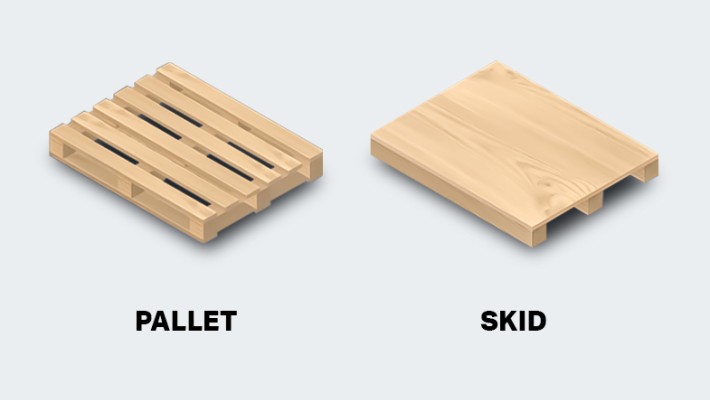Freight Forwarder Insights
Huin International Logistics Latest Articles
If you are in the import/export business, you need to know how to handle pallets!
In international logistics, containers and pallets are often used to transport general cargo.
The best part about pallet transport is that it's simple to load, unload, and carry. With extra reinforcement from film wrapping and strapping, it can reduce cargo loss and damage while protecting against moisture. According to the International Organisation for Standardisation (ISO), standard pallet specifications are broadly divided into the following:
1️⃣European Standard: 1200*800mm or 1200*1000mm
2️⃣American Standard: 1219*1016mm
3️⃣Australian Standard: 1140*1140mm
4️⃣Japanese standard L*W 1100*1100mm
5️⃣National standard Length*Width 1100*1100mm or 1200*1000mm
From the material, Common pallets are generally divided into plastic and wooden types.
Plastic pallets are mostly made using injection molding or blow molding. They are made with two environmentally friendly materials: polypropylene (PP) and polyethylene (HDPE). The plastic pallets that are exported must comply with the international standard ISPM15 (heat-treated pallets).
Wooden pallets are made from natural wood. They are either fumigated or fumigation-free.
Fumigated pallets are made mostly of pine, poplar, and other solid wood. They are fumigated—or treated with smoke to kill insects and other small animals—and disinfected, or cleaned, after a series of high-temperature treatments. This makes them resistant to insects and moths. Each wooden pallet will be marked with the "IPPC" fumigation mark, which proves that it has been through the inspection and quarantine process. According to international trade rules, pallets must have inspection and quarantine certificates, as well as heat-treatment fumigation and disinfection certificates, so that they can be exported to foreign countries smoothly. The pallets that don't undergo fumigation are also fumigation-free. These pallets are made from processed wood, such as plywood and density board. They are pressed and heated at high temperatures, so there's no need to fumigate them again.
Why should solid wood pallets be fumigated before export?
This is to prevent harmful pests and diseases from harming the forest resources of the importing country. It's important to note that not only do solid wood pallets need to be fumigated, but any wooden packaging used for export goods must be fumigated as well. This is to prevent the spread of pests and diseases. This includes wooden boxes, wooden slats, and triangular wood.
The United States, Canada, Mexico, Britain, the European Union, Japan, South Korea, Brazil, Turkey, Australia, and New Zealand are some of the countries that have general requirements for fumigation.
However, wood from Southeast Asia, the Middle East, India, Pakistan, and Africa doesn't need fumigation, but it can't have bark.
How should we choose a pallet?
It is recommended to choose a pallet based on the weight of the goods and the budget. If you're carrying heavier items, use solid wood or plastic pallets because they can hold more weight. For lighter items, you can use plywood pallets that haven't been treated with chemicals. This makes sure your items are safe during transport and it can also save you money.
The height of the pallet isn't set in stone. You can order it based on the type of cabinet and whether the goods can handle pressure. You can choose to load directly to the top, as shown in the picture below.
You can also stack in two layers, and in that case, you'll need to control the height according to the box size. For example, for 20GP (inner diameter height of 2.385m), the pallet height is recommended at 1-1.1m, while for 40HQ (inner diameter height of 2.69m), the pallet height is recommended at 1.2-1.3m.
